By Jeffrey A. Rendall, Images Courtesy of Miura Golf
HEMIJI, JAPAN – No one would deny that passion is important in any endeavor, especially in one that you’ve dedicated a lifetime to perfecting.
Japanese master club-maker Katsuhiro Miura understands passion for his life’s work, having started making golf clubs in 1957 – and it’s safe to say that he’s come as close to perfection as anyone in the business.
Bill Holowaty, Miura’s Executive Vice President, Product Strategies, tells how the master’s passion got him started: “Mr. Miura is from the Himeji area of Japan, famous for its steel, and it’s originally where Samurai swords were manufactured. It’s also where the first golf foundries were located in Japan. At one time, there were several Japanese manufacturing facilities in Himeji – so it would have been quite a natural thing to step into that (club-making), because it was an employer in the area.”
Holowaty continues, “Beyond being in the right place at the right time, Mr. Miura developed a real eye/passion for the manufacturing of clubs, and early on, he felt that the process they were using (and continue to use) to manufacture golf clubs was flawed.”
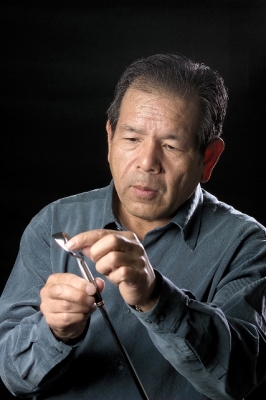 |
Japanese customs come into play at this point, as it was culturally frowned upon for a younger person to come in and try and make wholesale changes to accepted practices. For this reason, a little over 35 years ago he left the company he was working for and started his own, because he had the belief (and the passion) that the way to manufacture golf clubs was to be able to create a grain structure within the head that was as tight as possible.
And because of that tight structure in the heads Miura produces, there’s a level of feel and performance that other club makers can’t offer, with all the playing characteristics that golfers look for.
“Thankfully, with determination and perhaps a little stubbornness, Mr. Miura was able to put together a small group and was able to start his own company. All these years later, it continues to thrive,” Holawaty added.
Thrive indeed. Just a casual glance at a Miura product and you’ll grasp the quality of the design and manufacturing. You can’t see “grain structure” in golf clubs with the naked eye, but there’s no doubt that these products are cared for during the process.
It’s more than just looks, however.
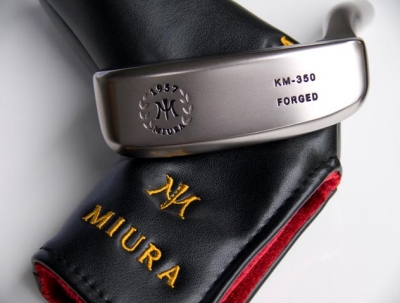 |
“Mr. Miura would tell you in very simplistic terms that the golf ball doesn’t know who’s holding the club at the end,” Holowaty explained. “The idea of a golf club is to get back to square at impact.”
Holowaty expounds further on the Miura philosophy: “We had a new irons model one time and we were in talking about the design side of it – and I asked Mr. Miura, what makes this club different than the rest?”
“He come back at me with – and this was early on in the process – ‘nothing.’ I asked the question and it was a literal answer. I laughed a little bit, and we ended up getting to what I wanted. But what he was saying, was, an 8-iron is an 8-iron is an 8-iron. And they’re all designed to do the same thing, which is designed to hit the ball 145 yards whether it’s a mid-sized cavity or a tournament blade,” Holowaty mused.
True, all 8-irons would be designed with a similar loft and head volume, even if the shape may be a bit different for each model.
“This was enlightening to me,” Holowaty elaborated, “because to sort of stereotype a professional, a low-handicap, a mid-handicap and a high-handicap into playing a certain club isn’t necessarily what will work. We’ve got a guy right now who’s testing on the PGA Tour with a MC-102 model, our mid-sized cavity with the most offset, but it’s because he played Ping all his life and it’s a very similar look.”
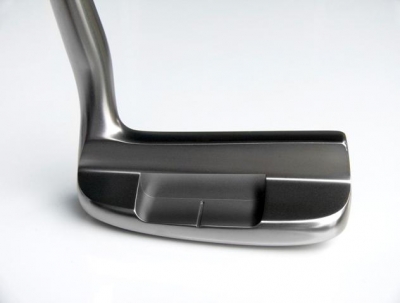 |
“We also have 15-handicappers who grew up playing blades and say ‘I love the look of the blades, it’s always what I’ve done, I’ve tried everything and I shoot the same score whether I play with my blades or with an oversized game improvement iron,” Holowaty added.
I personally can relate to the 15-handicapper who cut his golfing his teeth on forged blades, as that’s the way I grew into golf, employing my Dad’s 70’s-vintage MacGregor Tourney blades.
So looks don’t make all the difference, but they do help with comfort and familiarity – and it ultimately helps get the ball in the hole.
With Miura’s emphasis on experience and craftsmanship, how does it gel with the latest in computer technology and simulators that are such a part of the industry these days? Again, Holowaty explains.
“There are two sides to the computer-aided technology question for Mr. Miura. He told me not long ago that he wishes that they’d had a robot when he’d first started, because it would have speeded up his process of analysis (there’s a robot on the roof of the Miura factory now). He used to have to go out to the range to get guys to hit balls, and stand with a professional to get their input and then go back and make a little change to the grind and then go assemble it and go back and do it all over again.”
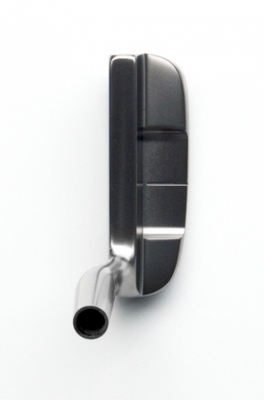 |
“I think the role of computers differs in a forged club as opposed to a cast club. The design of a tournament blade, for example, really hasn’t changed. In many senses, what Mr. Miura’s doing when he’s working on a blade is changing toe profiles, leading edge, sole design, etc. – and certainly computers can help with that and really work,” Holowaty said.
But it’s clear the most important ‘software’ resides in Miura’s experienced human mind. Holowaty said there likely isn’t a sole design or a bounce, or a leading edge that Miura hasn’t tried at some point in time. It’s an innate quality that Miura just knows what’s best for players, and the results speak for themselves.
According to Holowaty, computers do play a role in the design process, but more so with Miura’s two sons (who are also very involved in the family business) who are both in their 30’s and use the programs to aid with specialty designs such as wedges and custom grinds.
One of those ‘custom’ type clubs we tried out recently was the 1957 Series putters – as a follow-up to the Miura irons and wedges that we’ve tried in the past.
Putters are perhaps the most personal and subjective clubs in your bag – and in this area, the Miura version certainly did not disappoint. Again, just looking at the beauty of the design and precise manufacturing just makes you want to go out and start hitting putts.
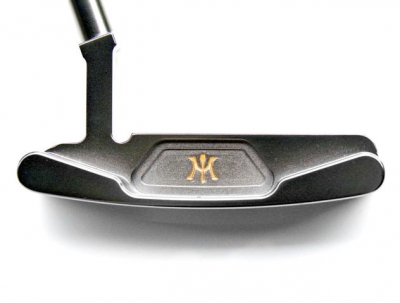 |
Miura’s design philosophy for irons also translates to putters, as it turns out. “Simplicity and elegance mean a great deal in any of Mr. Miura’s designs,” Holowaty lectured. “Function always comes first, and form flows from that. Knowing that optics are crucial to the success of any club, but particularly the putter, Mr. Miura makes sure he provides a solid striking surface supported by a visually pleasing, easy-to-line-up body.”
“Lines, curves and the resulting colors and shadows have to inspire quiet confidence, and must never be visually jarring or distracting,” Holowaty added.
In that sense the Miura putters are a departure from some of the more ‘futuristic’ putters that are coming out these days, some of which look like they were inspired by Star Trek, not the Samurai tradition.
And weight plays a role as well. “The player has to be able to make a smooth, authoritative stroke without feeling any danger of jerking. Then there has to be reliable feedback in the hands. We all know the practice green doesn’t always roll the same as the eighteen greens that matter – and even those greens can vary as conditions change over the course of five hours. So consistent feedback is one of the golfer’s key signals – perhaps more important than watching the ball roll – of how he needs to perceive and adjust to green speed,” Holowaty said.
Consistency’s the key – and as with other types of clubs, Mr. Miura has scrupulously studied the best putters in the game to incorporate their traits into his putters – their path, their pace, and their input.
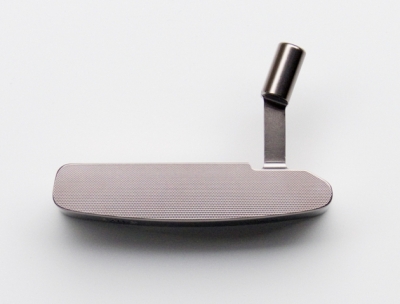 |
And it’s consistent, indeed. The Miura putter (model KM-005) is everything that Holowaty spoke about. A brief trial wouldn’t necessarily provide the overall benefits from the club, but I can say the ball rolls true and didn’t take long at all to get used to. Many of the putters these days are just about as bizarre in looks as they are inexplicable in technology – but the Miura putter rates highly in tradition, and ease of use.
I look forward to testing it further. For now, I know it appears to have all the quality that all the Miura products embody, having seen them for several seasons now.
Holowaty sums it up: “Nothing in Mr. Miura’s work seeks flashiness – so although his clubs are revered by many because of their simple beauty, and although he is sensible of the compliment, that was never his goal. Performance is, and always has been, his sole aim. In putters, Mr. Miura is seeking the perfect balance of metal softness, shape, look, weight and sound that will develop into each golfer’s personal recipe for confidence on the greens. And what’s better than making a few key putts to spread crucial confidence through an entire round?”
Sounds like something to be passionate about.
Details:
Miura Golf’s North American headquarters is in Burnaby, British Columbia.
Consult the website for dealers near you, or send inquiries to Bill Holowaty, bill@miuragolf.com. Telephone: 604-708-4653. FAX: 604-708-4663.
Toll Free: 1-866-GO-MIURA (466-4872)
Website: www.miuragolf.com
| Related Links | Comments on this article? | |
|
Maryland National Golf Club Hollow Creek Golf Club Rocky Gap Resort PB Dye Golf Club in Ijamsville Whiskey Creek Golf Club |
E-mail Jeff Rendall, Editor: jrendall@golftheunitedstates.com |











